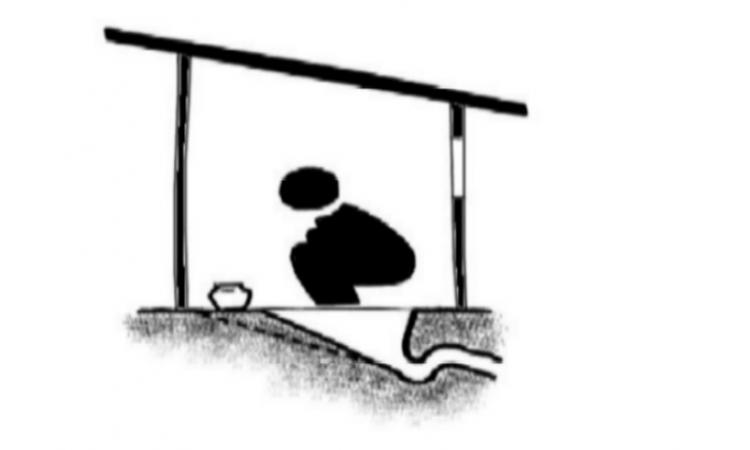
Of the one billion defecating in the open globally 66% live in India, of which 92% live in rural areas. Despite concerted government efforts for the last three decades to promote sanitation, India continues to lag behind in terms of access to basic sanitation facilities. Odisha in eastern India, is among the lowest performing states in terms of toilet coverage, and recent evidence shows that open defecation is high in the state. Even among households who have toilets, many do not use them.
The paper titled 'Socio-cultural and behavioural factors constraining latrine adoption in rural coastal Odisha: An exploratory qualitative study' published in the journal BMC Public Health, presents the findings of a study undertaken to understand the reasons for low latrine uptake and identify factors that motivate and constrain latrine use with regard to government subsidised facilities in Odisha.
The study was carried out across rural villages in Odisha and qualitative methods were used to explore and develop an in-depth understanding of different factors responsible for low adoption of latrines. People who owned one of the three types of latrine facilities namely, self-financed, GOI subsidised with improvements financed privately by the household, and GOI subsidised latrines constructed without further improvement were selected and interviewed.
Findings of the study
It was found that even where people had an option to use a household latrine, many were reluctant to use them and chose to continue to defecate in the open. Government subsidised latrines facilitated by NGOs under the Total Sanitation Campaign largely remained unused, and even villages officially attaining Open Defecation Free (ODF) status were not open defecation free.
- The main reason for latrine installation was the arrival of a newly wed bride into the household, and the concern to protect and preserve her dignity, privacy and security as her defecating outside would lower the prestige of the family. However, the same kind of thinking was not followed in the case of the daughters or other females within the family.
- Women/daughters in law from wealthier or better educated and upper caste families expressed gratitude for the ease and convenience of using the latrine, which normally also included a water supply and private place to bathe, which liberated them from the worry of being seen bathing and defecating in public as it could generate village gossip and family shame.
- In contrast, married women in GOI subsidised latrine households who tended to be of low and middle castes expressed regret for having to use the household latrines as defecating in the open in the evening provided them with a rare daily opportunity to escape the house, the scrutiny of the mother-in-law, and socialise with women friends and peers.
- Women were less concerned about being seen defecating out in the open with the attainment of mother-in-law status and old age.
Local beliefs of purity and pollution
- Strong beliefs around impurity and pollution and the required rituals for purification and cleansing post-defecation played a big part in the choice to continue defecating in the open. Importance was placed on the need for water inside the latrine to complete the cleansing acts following defecation.
- Beliefs that faeces were impure also caused people to look at the practice of containing faeces in the latrine pit in the house as a ‘sin’, because idols and pictures of gods that were revered were kept and worshipped in every house and having toilets within or next to the house was perceived to make the entire house impure.
Poor planning and designs of latrines
- Problems with inadequate and inappropriate designs and poor and incomplete quality construction of the TSC subsidised latrines created barriers to latrine use. Annual risks of monsoon flooding in the area were not considered in the design and construction of the subsidised latrines, many of which had pans installed at or near ground-level and were very small, shallow pits. As a result, many of the toilets got water-logged and became unusable in the rainy season.
- Non-involvement of the users in deciding the toilet design to suit their needs and preferences also led to non use of latrines.
- Households were found to rely highly on subsidies, and the subsidy amount was found to be inadequate to construct a working toilet.
The findings reveal that poor quality and inappropriate latrine designs under government sanitation schemes are important factors, but are not the only reasons for low latrine uptake and use. A number of behavioural aspects constrain the adoption and use of latrines and these vary among communities by gender, age and caste. Any future sanitation intervention needs to consider these aspects and approach the issue of sanitation behaviour change holistically, rather than focusing on targets.
Lead image source: Sourabh Phadke in CONRADIN, K., KROPAC, M., SPUHLER, D. (Eds.) (2010): The SSWM Toolbox. Basel: seecon international gmbh. URL: http://www.sswm.info
Download a copy of the paper below.
/articles/why-do-people-choose-defecate-open-use-toilets-rural-coastal-odisha